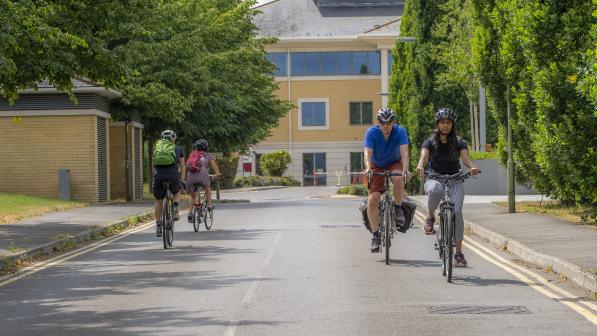How to stay safe when riding to work
By Julie Rand

Cyclist on a roundabout. Photo: Joolze Dymond
Riding to work is one of the easiest ways of incorporating some daily exercise into your routine. Never mind stuffy gyms and exercise bikes, nothing beats feeling the wind in your hair and the sun on your face – even the occasional downpour can be refreshing. You’ll arrive at the workplace feeling more alive than that motorist who is still stuck in the traffic jam you just whizzed past.
However, many people think – wrongly, as it happens – that cycling is very dangerous. But if you follow our commuter tips, not only will you feel safer, you will be a safer, better cyclist too.
- First of all, consider getting some cycle training – it’s not just for children and, even if you’ve been riding for years, you may have lapsed into bad habits such as passing too close to car doors or keeping in too close to the kerb. Training can help identify and eliminate these common mistakes and make you a more confident, competent rider.
- See and be seen – good riders become part of the traffic flow, rather than keeping out of the way as much as possible. After all, you are traffic too! Look around at regular intervals and make eye contact with drivers at every junction you pass. Hi-vis clothing might make you feel safe but won’t make you visible if you’re in a blind spot.
- Make sure your bike is roadworthy – check tyres, brakes, chain and saddle on a regular basis; soft tyres make you more likely to skid and bad brakes mean you won't stop in time if something happens suddenly.
- Sit up as straight as possible – this will aid balance and make it easier to signal clearly with your arm straight out and at shoulder height. You will also be more visible.
- Never, ever under any circumstances ride up the inside of lorries, buses and other long vehicles or even wait in front of them at traffic lights – this is a common cause of many cyclist crashes as the driver may not see you when they pull away, especially if they are turning left; they may also move right before turning left.
- Consider buddying up with a more experienced rider – they can help you find the quietest route or negotiate busier junctions. If you don’t know anyone, try putting out a call on your company’s intranet or group email if it has one.




